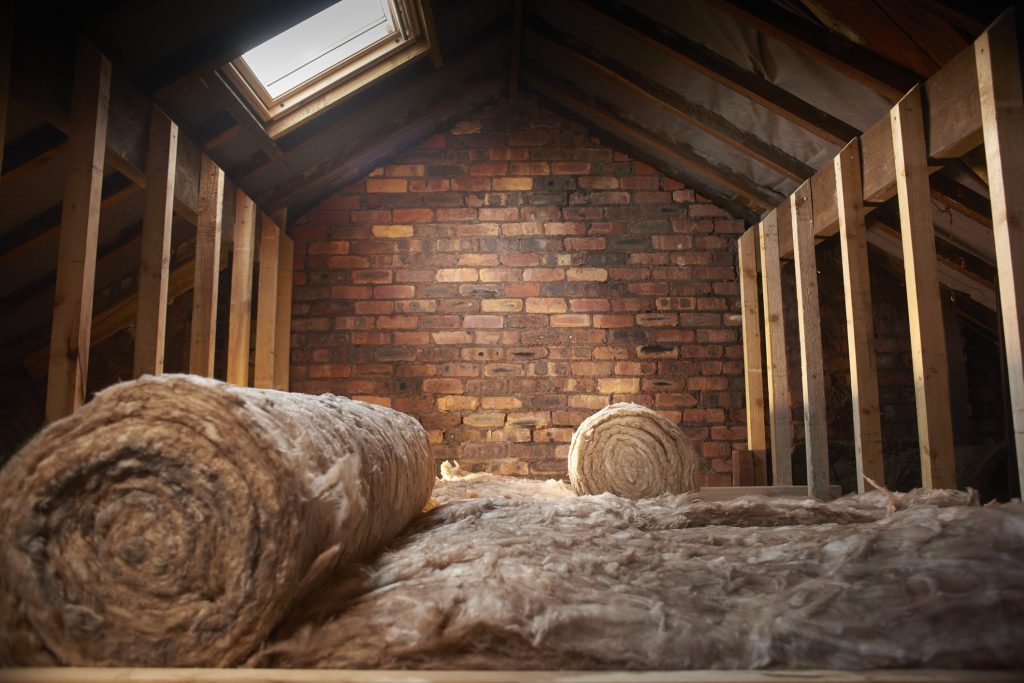Installing internal wall insulation boosts your home’s energy efficiency by creating a thermal barrier, reducing heat loss through your walls. It helps manage moisture, preventing mold and structural damage, and maintains consistent indoor temperatures by minimizing thermal bridging. You’ll also enjoy lower energy bills since effective insulation cuts down on heating and cooling costs. It’s eco-friendly too, reducing your carbon footprint and greenhouse gas emissions. Choosing the right insulation material, like mineral wool for soundproofing or foam boards for thermal resistance, can further enhance these benefits. Discover more about options and installation techniques for the best results.
Understanding Internal Wall Insulation
Understanding internal wall insulation is essential for enhancing your home’s energy efficiency and comfort. By choosing the right type of insulation and knowing the installation process, you can make a significant difference in how well your home retains heat. For more detailed information and expert tips on the best insulation options, click here.
There are several types available, including rigid foam boards, mineral wool, and insulated plasterboard. Each type has its benefits and is suited for different scenarios.
Rigid foam boards are great for their high thermal resistance and moisture control. Mineral wool, on the other hand, offers excellent fire resistance and soundproofing, making it a versatile choice. Insulated plasterboard combines insulation and drywall, making the installation process quicker and easier.
When it comes to the installation process, you’ll usually need to strip the walls down to the bare structure. Rigid foam boards or mineral wool can be fitted between wooden battens, which are then covered with plasterboard. Alternatively, insulated plasterboard can be directly attached to the wall using adhesive or mechanical fixings.
While it might sound straightforward, getting professional help ensures the job is done correctly and effectively. Proper installation is vital for maximizing the benefits of internal wall insulation in your home.
How It Reduces Heat Loss
Internal wall insulation significantly reduces heat loss by creating a thermal barrier between your home’s interior and the external environment. This barrier works by slowing down the transfer of heat, keeping your home warmer in the winter and cooler in the summer.
When you install insulation, you effectively minimize thermal bridging, which occurs when heat escapes through materials that are poor insulators, like metal or wood.
By addressing thermal bridging, internal wall insulation guarantees a more consistent indoor temperature. This is particularly important in older homes where construction methods didn’t prioritize energy efficiency. Adding insulation to your internal walls fills gaps and prevents heat from leaking out through these bridges.
Moisture control is another essential benefit of internal wall insulation. Insulation materials often have properties that help manage moisture levels within your walls. By preventing condensation and dampness, you reduce the risk of mold and structural damage. This not only preserves the integrity of your home but also contributes to a healthier living environment.
Benefits for Your Energy Bills
By effectively managing heat loss and moisture, internal wall insulation can greatly reduce your energy bills. When you insulate your internal walls, you create a barrier that keeps the warmth inside during winter and prevents excessive heat from entering during summer. This means your heating and cooling systems don’t have to work as hard, leading directly to lower energy consumption and, consequently, smaller bills.
One of the key benefits of internal wall insulation is its cost effectiveness. While the initial investment might seem significant, the savings you’ll see on your energy bills make it a worthwhile expense. In many cases, homeowners find that the installation pays for itself over time through reduced energy costs.
The installation process is relatively straightforward and doesn’t require major disruptions to your daily life. Professionals can complete the job efficiently, ensuring that your home’s energy efficiency improves without a lengthy or complicated procedure.

Environmental Impact
Opting for internal wall insulation greatly reduces your home’s carbon footprint. By improving your home’s thermal efficiency, you’ll need less energy to maintain comfortable temperatures. This reduction in energy consumption means fewer fossil fuels are burned, leading to lower greenhouse gas emissions. Additionally, this small change in your home contributes to a larger, positive impact on the environment.
When selecting insulation, consider using sustainable materials. Products like sheep’s wool, recycled cotton, or cellulose offer excellent insulation properties while being eco-friendly. These materials often have lower embodied energy, meaning less energy is used in their production, transport, and installation compared to traditional options.
Furthermore, many sustainable materials are biodegradable, ensuring they won’t contribute to landfill waste at the end of their lifecycle.
Choosing the Right Insulation
Selecting the appropriate insulation material for your home’s interior walls can greatly enhance energy efficiency and environmental sustainability. When choosing the right insulation, you’ll encounter various material types, such as fiberglass, mineral wool, and foam boards. Each of these materials has its own set of advantages.
For instance, fiberglass is often selected for its affordability and ease of installation, while mineral wool offers superior soundproofing and fire resistance. Foam boards, on the other hand, provide excellent thermal resistance and are particularly effective in preventing air leaks.
Besides material types, it’s essential to take into account the installation methods. Some insulation materials, like fiberglass batts, can be installed as a DIY project if you’re handy with tools. However, other materials, such as spray foam, generally require professional installation due to the need for specialized equipment and expertise.
Ensuring a proper fit and seal is vital for maximizing the insulation’s effectiveness, so don’t skimp on quality installation.
